|
Displaying items by tag: Lawsuit
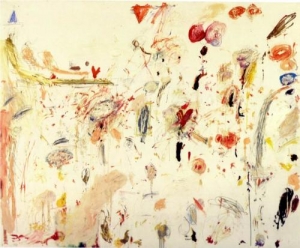
When the influential American painter Cy Twombly (1928-2011) passed away two years ago, he left the bulk of his artwork and millions of dollars in cash to the Cy Twombly Foundation of New York. The wealth of money and art passed from a trust to the foundation, which is devoted to protecting and promoting Twombly’s legacy. The Cy Twombly Foundation now finds itself embroiled in a lawsuit that was filed on Wednesday, March 13, 2013 in a Delaware state court.
The lawsuit claims that Thomas H. Saliba, one of the four individuals in charge of the foundation, took over $300,000 in unauthorized fees for investment services and assisted another foundation director, attorney Ralph E. Lerner, in pocketing funds. The claim was filed by Nicola Del Roscia, Twombly’s companion and the foundation’s president, and Julie Sylvester, a curator, Twombly expert, and the foundation’s vice president. Roscia and Sylvester also assert that Lerner and Saliba inflated the value of Twombly’s works in order to pad commissions for their own financial gain. Lerner and Saliba have refused to disclose their trustee commissions, making it impossible to determine the extent of their wrongdoing.
The recent lawsuit comes a month after Lerner asked the same Delaware court to appoint Twombly’s son, Alessandro, as a fifth board member in order to break the stalemate over the dispute. Roscia and Sylvester stated in recent court filings that Lerner’s request was an attempt to outmaneuver them. Roscia and Sylvester claim that Lerner hoped to bring Alessandro, the third trustee of Twombly’s trust, on board to help cover up Saliba’s wrongdoing.
While Twombly is a powerful force in the art market, highly inflating the prices of his work could prove dangerous for the foundation by creating confusion about the true value of his art and in turn destabilizing the Twombly market.

The Keith Haring Foundation filed a lawsuit against the organizers of the exhibition Haring Miami on Friday, March 8, 2013 in a Miami courtroom. The Foundation, which owns all of the intellectual property rights in Keith Haring’s (1958-1990) artwork as well as a considerable chunk of the artist’s oeuvre, is seeking a restraining order and an injunction against the organizers in relation to copyright and trademark infringement.
A New York-based law firm, which is representing the Haring Foundation, asked that the organizers remove all but 10 of the 175 works on display. The Foundation claims that many of the works on view as part of Haring Miami have not been properly authenticated.
During promotions, organizers announced that approximately 200 original Haring artworks would be on view, ultimately securing sponsorship from established companies such as The Miami Herald, Bombay Sapphire, and Veuve Clicquot. Organizers also enticed a number of prominent members from the Miami arts community to join the exhibition’s “Host Committee.”
After the lawsuit was filed, exhibition organizers contacted the foundation and agreed to remove all fake artworks and destroy the accompanying exhibition catalogue, which featured the unauthenticated works. Although the organizers have been compliant, the foundation still plans to move forward with the lawsuit.
Haring founded the Keith Haring Foundation in 1989 to support organizations that offer education to underprivileged children as well as organizations that offer AIDS/HIV education, prevention, and care. The foundation is also devoted to protecting the legacy of Haring, who passed away in 1990 due to AIDS-related complications.
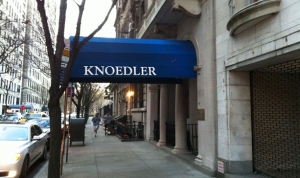
Prominent Canadian art collector David Mirvish filed a lawsuit on Friday, February 22, 2013 against the disgraced New York-based art gallery, Knoedler & Company. Since closing its doors in late 2011, Knoedler & Company has been accused by multiple clients of selling forged paintings, which were acquired by the gallery from Long Island dealer Glafira Rosales. Mirvish’s is the fifth lawsuit against Knoedler since 2011.
However, Mirvish’s claim is slightly different than its predecessors. While the other lawsuits accused Knoedler of passing off fake Jackson Pollock (1912-1956), Robert Motherwell (1915-1991), and Mark Rothko (1903-1970) paintings as the real deal, Mirvish claims that the works he purchased from the gallery were authentic. Instead, Mirvish is arguing that he lost out on millions of dollars in profits when Knoedler failed to sell three Jackson Pollock masterpieces he purchased jointly with the gallery.
Between 2002 and 2007 Mirvish purchased two paintings attributed to Pollock and bough a half stake in a third for $1.6 million. The sole purpose of Mirvish’s dealings with Knoedler was to resell the works for a profit. One of the Pollock paintings sold to collector and hedge fund manager Pierre Lagrange for $17 million in 2007, but in 2011, the day before Knoedler shut down, Lagrange announced that he would be filing a lawsuit against the gallery as forensic testing suggested the painting was a fake. The Lagrange suit was eventually settled but Mirvish was not involved and refused to return the money he made off of the deal.
Mirvish is now seeking reparations for the two unsold Pollocks, claiming that Knoedler breached its agreement when the gallery suddenly went out of business. Mirvish is asking Knoedler to return the two paintings, referred to as “Greenish Pollock” and “Square Pollock,” as well as reimburse him for his $1.6 million stake in the third painting, referred to as “Silver Pollock.” Even though Mirvish only paid Knoedler $3.25 million, half of “Greenish Pollock” and “Square Pollock’s” purchase prices, he claims that Knoedler’s violation of contract entitles him to both paintings.
Nicholas Gravante, the lawyer of Knoedler’s former president, Ann Freeman, is representing Mirvish. Freeman is not named as a defendant in Mirvish’s case and she has maintained that all works acquired from Rosales are genuine. Rosales is currently under investigation by the F.B.I.
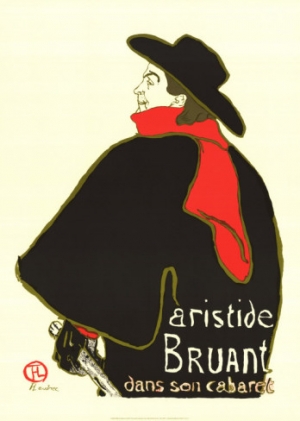
State Farm Insurance is suing French art dealer Alfred DeSimone for either discarding or losing an original lithograph by the colorful French artist Henri de Toulouse-Lautrec (1864-1901). The lost work, Artistide Bruant Dans Son Cabaret, 1893, was part of a series of three posters used to promote French cabaret singer and comedian Artistide Bruant (1851-1925) around Paris in the late 1800s. The lithograph remains one of Toulouse-Lautrec’s most recognizable images.
State Farm is seeking $103,000 in damages from DeSimone for the centuries-old lithograph, which was bought by the insurance company’s client, Thomas Rosensteel, in 2006. Rosensteel purchased the work as an investment, but never ended up hanging it. While looking for a buyer, Rosensteel gave the lithograph to DeSimone for safekeeping, agreeing to pay him a fee once the work was sold. Rosentsteel found a buyer in 2010 and when he went to pick up the work from DeSimone, it was missing. DeSimone claims that the lithograph may have been put in a mailing tube and either sent to someone else or discarded. Rosensteel filed an insurance claim with State Farm who paid $103,109 to him; the company is now seeking compensation for the claim.
DeSimone, who has been experiencing financial troubles, has not been charged with any criminal wrongdoing in the Toulouse-Lautrec case. A judge will review the lawsuit on April 25, 2013.
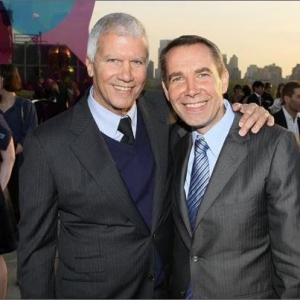
Onetime friends and business partners, powerhouse art dealer Larry Gagosian and billionaire collector Ronald O. Perelman have been involved in a bitter legal battle since September 2012. On January 25, 2013 Gagosian asked a New York judge to dismiss the case, which accuses him of using his high standing in the art world to arrange secret deals and influence art prices; Gagosian claims that the lawsuit is frivolous.
The ongoing clash started last year when Perelman purchased Jeff Koons’ (b. 1955) $4 million Popeye sculpture from Gagosian along with two other works said to be a Cy Twombly (1928-2011) painting and a Richard Serra (b. 1939) sculpture. Perelman paid for Koons’ oversize granite sculpture in full, but decided to cancel the deal when the work took longer than expected to complete. Since the value of Koons’ work is constantly on the rise, Perelman insisted that Gagosian owed him $12 million rather than the $4 million he initially paid for the unfinished work.
In his lawsuit, Perelman claimed that Gagosian had a secret agreement with Koons to redirect most of the profit from Popeye’s resale away from Perelman and towards Koons. The sculpture in question was ultimately sold to an unnamed buyer for $4.5 million and Gagosian gave $4.25 million of that back to Perelman, a fact Gagosian pointed out in court on Friday. Gagosian also claimed that Perelman refused to pay the agreed-upon price for the Twombly and Serra works, insisting that he would compensate for the debt he accumulated by giving Gagosian a number of artworks from his collection that he no longer wanted. Rather than benefitting from the deal as Perelman asserts, Gagosian said that he has lost $1.8 million so far.
While Perelman maintains that Gagosian is dishonest and deceitful in his dealings, Gagosian claims that the lawsuit is simply a way for his former friend to mar his name. Perelman’s side has made subpoenas as the battle continues.

When Henry Kravis, the co-chairman of the global investment firm KKR & Co., and prominent art collector Donald L. Bryant Jr. purchased a triptych by Jasper Johns (b. 1930) in 2008, the duo agreed to take turns exhibiting the works in their homes before eventually donating them to the Museum of Modern Art in New York. In a lawsuit recently filed by Kravis and his wife, Marie-Josée, the couple claims that Bryant violated their agreement when he refused to hand the works over to them on January 14, 2013. The Kravises stated that Bryant is essentially holding the works hostage until their agreement is amended, nixing the pledge to donate the paintings.
Considered one of the most important living American artists, Johns completed the three works titled Tantric Detail I, Tantric Detail II, and Tantric Detail III in 1980 and 1981. A powerful presence in the contemporary art market, Johns’ triptych is said to be worth between $15 million and $25 million. MoMA announced the Johns acquisition in a 2008 press release saying that the works were a “promised gift” from Bryant, who was one of the museum’s trustees at the time, Marie-Josée, the president of MoMA’s board of trustees, and her husband, Henry.
In their lawsuit, the Kravises ask that Bryant relinquish the works to them so that they can fulfill their vow to donate the paintings to MoMA.

On January 23, 2013, a three-judge federal appellate court in California heard arguments from the heirs and relatives of a prominent Hungarian art collector. The lead plaintiff, David de Csepel, is the great-grandson of Jewish banker Baron Mór Lipót Herzog whose legendary art collection once included works by El Greco (1541-1614), Anthony van Dyck (1599-1641), Diego Velázquez (1599-1660), Pierre-Auguste Renoir (1841-1919), and Claude Monet (1840-1926).
The case, which could be the last major art restitution case relating to the Holocaust, involves 40 artworks valued at $100 million that were seized by Nazis during World War II. Csepel argued that Hungarian courts acted unjustly as they have never returned the stolen paintings nor paid restitution to Herzog’s relatives. In fact, a number of paintings once belonging to Herzog remain in the collections of Hungarian museums.
The lawsuit is attempting to use U.S. courts to press charges against the Hungarian government, three of the country’s museums, and a university. However, the Hungarian government’s lawyers argue that U.S. courts have no jurisdiction on foreign soil, pushing to have the case played out in Hungarian courts or the International Court of Justice. The plantiff’s attorney, Michael Shuster, claims that the case is relevant for U.S. courts because most of the living heirs involved in the case are U.S. citizens and that Hungarian courts can be problematic.
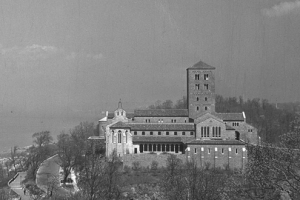
Built in the 1930s in northern Manhattan’s Fort Tryon Park on land donated by John D. Rockefeller Jr., The Cloisters, a branch of the Metropolitan Museum of Art, is a sight to be seen. Assembled from architectural elements dating from the 12th through 15th century, The Cloisters, which includes landscaped gardens, features a collection of nearly 3,000 works of art from medieval Europe.
Besides an impressive collection and scenic gardens, The Cloisters boasts a picturesque view of the Palisades, a line of steep cliffs that run along the lower Hudson River. Rockefeller’s grandson, Larry, is teaming up with the Met, to preserve the vista, which risks being obscured by LG Electronics’ new corporate headquarters in Englewood Cliffs, NJ.
The plans for the new LG location have the building stretching upward 143 feet, standing several stories above the tree line almost directly across the Hudson River from the Cloisters. Rockefeller, who has met with LG officials to discuss altering the building’s plans, is not alone in his concerns. A number of environmental groups have also filed lawsuits asking the company to reduce the new headquarters’ height. The Met has also written letters pleading with LG as well as a judge handling one of the environmental cases.
Designed by architecture giant HOK, LG will begin construction on 27 acres this year. The project is expected to conclude by 2016.

Over the course of 25 years in the 1980s and 1990s, Harry Rodman, a veteran gold refiner from New York City, and Alan Bronstein, a diamond dealer from New Jersey, assembled the Aurora Pyramid of Hope Diamonds, the most comprehensive collection of colored diamonds in the world. Featuring 295 rare gems, the collection became a point of controversy after Rodman died at the age of 99 in 2008.
Last year, Rodman’s heirs hit Bronstein with a lawsuit claiming that they were entitled to Rodman’s half of the diamond collection, which one appraiser valued at $14 million. The case became more complicated as Rodman, who made several wills in the last ten years of his life, was not only Bronstein’s partner, but also his stepfather. The legal dispute recently came to a close when Bronx Surrogate Judge Lee L. Holzman ruled that Bronstein fairly bought out Rodman’s interest in the Aurora Pyramid collection as well as another well-known grouping of diamonds known as the Aurora Butterfly of Peace.
The Aurora Pyramid of Hope, which is currently on loan to London’s Natural History Museum, has been exhibited at the Smithsonian Institution in Washington, D.C. and the American Museum of Natural History in New York. Bronstein plans to keep exhibiting the collection in museums for the benefit and enjoyment of the public.

In December 2010, Pierre Konowaloff, the heir to Russian art collector Ivan Morozov, filed a lawsuit claiming that he was the rightful owner of Paul Cézanne’s (1839-1906) painting Madame Cézanne in the Conservatory (1891), not the Metropolitan Museum of Art. Konowaloff explained that Morozov’s art collection was seized by the Bolshevik regime in 1918 and that when Stephen Clark, the collector and museum trustee who bequeathed the work to the Met in 1960, first bought the painting from Knoedler & Company in 1933, he did not carry out due diligence. Accusing the Met of wrongful acquisition, possession, display and retention, Konowaloff demanded that the work be returned to him and requested restitution for monetary damages.
On December 18, a judge in the 2nd District Court of Appeals in Manhattan ruled that the Met could keep the Cézanne masterpiece, as the museum remains the work’s rightful owner. The Met has stood behind their right to the painting since the beginning of the entanglement with Konowaloff. The lawsuit was initially dismissed in 2011 by judge Shira Scheindlin who said that a U.S. court has no basis for questioning a decision made by a foreign government on distant soil. After the rejection of Konowaloff’s appeal, Met officials can finally leave the dispute behind them.
Konowaloff filed a similar suit against Yale University in 2009 over Vincent van Gogh’s (1853-1890) The Night Café (1888). Konowaloff claimed that the van Gogh painting was also stolen during the Russian Revolution and bought by Clark regardless of its questionable history.
|
|
|
|
|